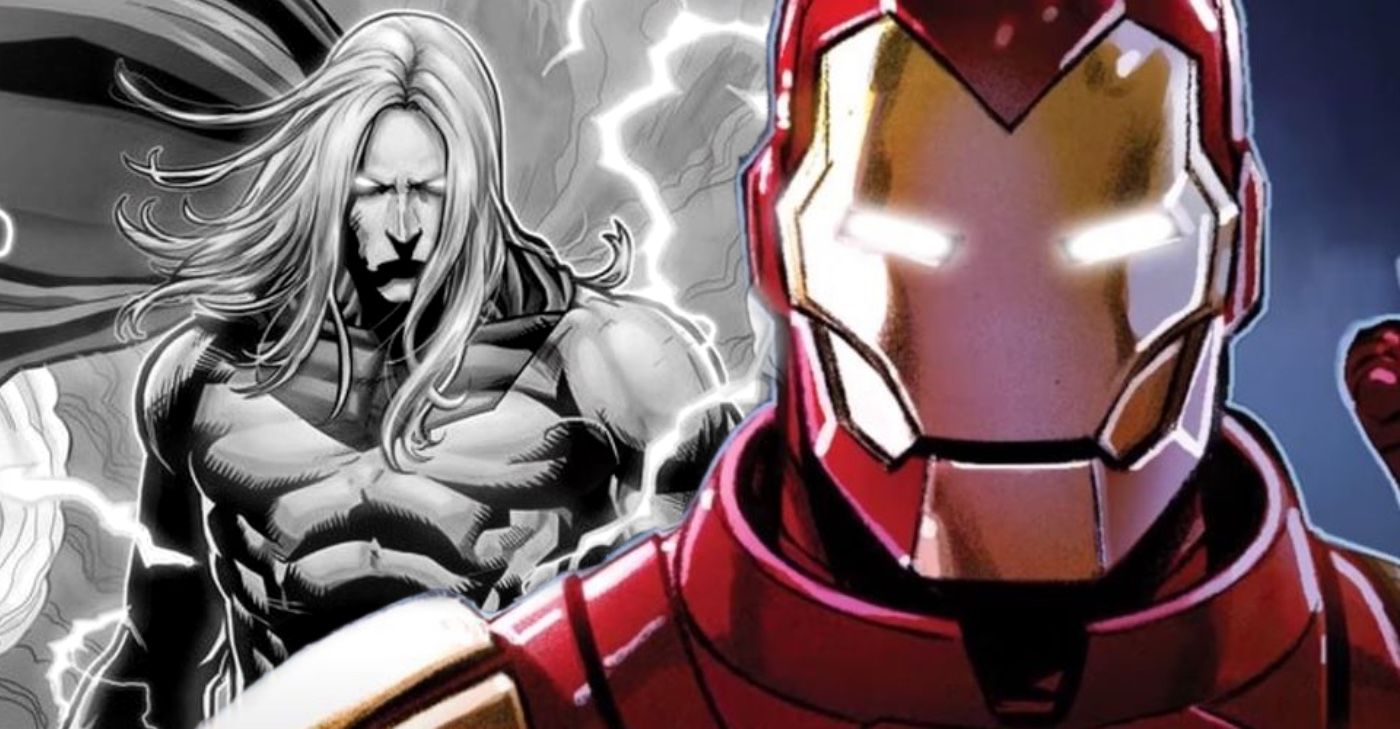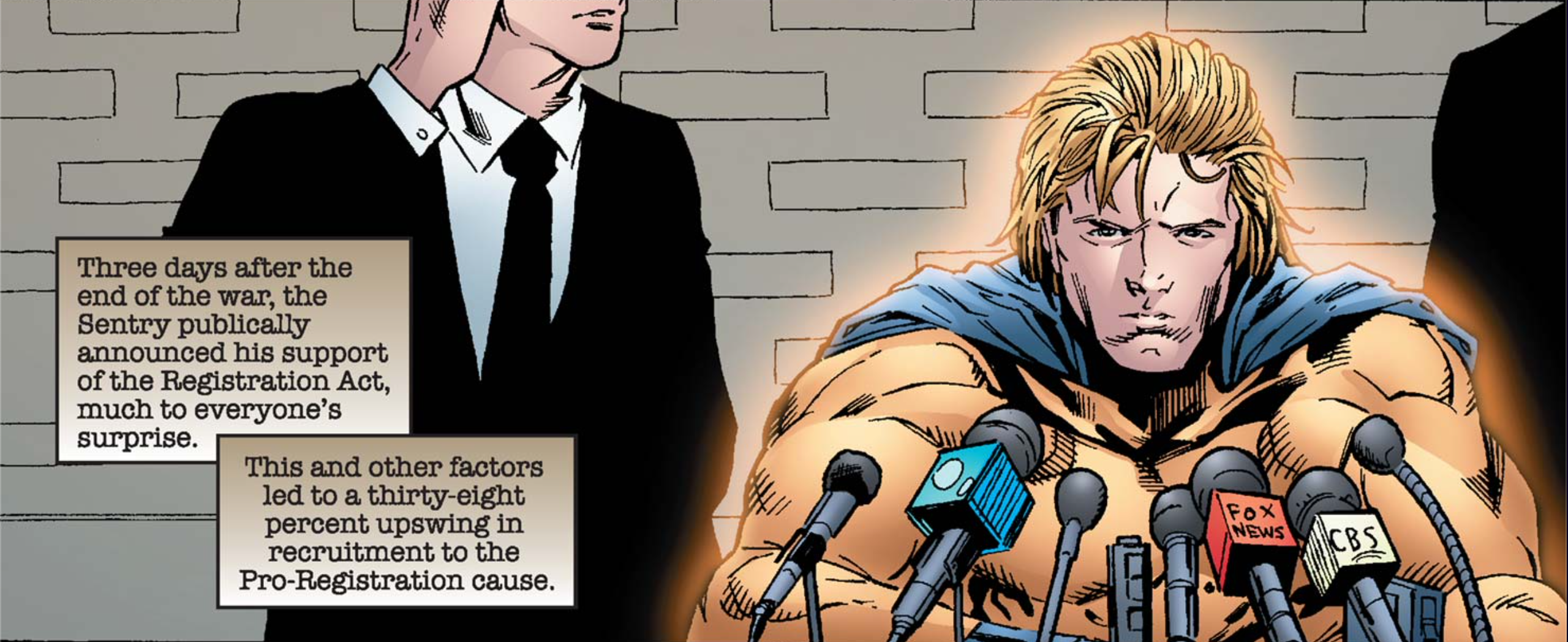While Captain America's surrender marks the official end of Civil War, Iron Man's biggest victory was winning public favor for superhero registration — something he might have never attained without the help of Marvel Comics' own Superman.
Marvel's Civil War event stands among the most popular and best-selling crossover series in comics history, and for good reason. The seven-issue series pits two of Marvel's hallmark Avengers, Captain America and Iron Man, in a literal and philosophical war over civil rights and accountability for superheroes, while the rest of the world was left to choose a side. The series ends with Cap's surrender, a move meant to end the bloodshed and violence. While Rogers hoped the public would see things his way, Tony Stark would win that battle, as well — with the help of the Sentry, Bob Reynolds.
In Civil War: Frontlines #11 by Paul Jenkins and Ramon Bachs, the perspective shifts to the people of New York, left to sort through the wreckage and rubble heroes left across the city. The issue shows how much of a warzone New York turned into, with buildings leveled, jets lodged into skyscrapers and nearly 50 civilians killed. With angry civilians wanting heroes held accountable, man heroes were already primed to register for the sake of keeping the peace. So, when Sentry, widely regarded as both one of the strongest and most volatile superheroes in the world, agreed to register, it made a huge impact, increasing hero registration by a whopping 38 percent — essentially crippling the anti-registration movement.
Iron Man turning Sentry into a spokesman was the winning blow for the pro-registration heroes, not Cap's surrender. It shows how far ahead Stark was thinking when he first recruited Reynolds to his side, back in New Avengers #24, also by Jenkins and Bachs. He told Sentry he had the power to win the war for them, and he was right. Sentry became the force that truly ended the registration conflict, just not the way he expected. Stark knew the risk and costs of launching a war over registration, and played the long game — even admitting his own survival wasn't guaranteed — to do what he thought was best. By having Reynolds, a hero with a destructive past who felt a great deal of responsibility for letting the war even happen, on his side, Stark knew he'd have a powerful hero, with an even more powerful story, to put the nail in the coffin when anti-registration sentiments were barely holding on.
With Stark's long and storied past of meddling behind the public's back for the "greater good," whether it be his use of The Thunderbolts and a Thor clone during Civil War or his later involvement in the Illuminati, it shouldn't be surprising that he was playing the long game with Sentry as well. Working behind the scenes and manipulating others is what he does best, so it a no surprise Iron Man didn't win Marvel's first Civil War by getting Captain America to surrender, but by turning Earth's most powerful hero into a photo-op.


